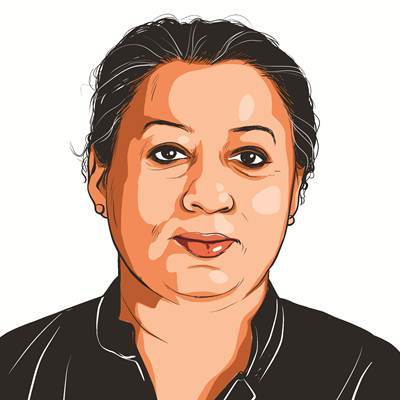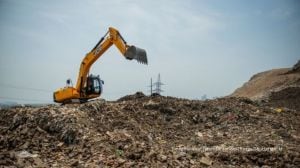Ritu Sarin is Executive Editor (News and Investigations) at The Indian Express group. Her areas of specialisation include internal security, money laundering and corruption. Sarin is one of India’s most renowned reporters and has a career in journalism of over four decades. She is a member of the International Consortium of Investigative Journalists (ICIJ) since 1999 and since early 2023, a member of its Board of Directors. She has also been a founder member of the ICIJ Network Committee (INC). She has, to begin with, alone, and later led teams which have worked on ICIJ’s Offshore Leaks, Swiss Leaks, the Pulitzer Prize winning Panama Papers, Paradise Papers, Implant Files, Fincen Files, Pandora Papers, the Uber Files and Deforestation Inc. She has conducted investigative journalism workshops and addressed investigative journalism conferences with a specialisation on collaborative journalism in several countries. ... Read More
Clothes from mass grave match those in cop photos: CBI
When the CBI submits its 15-page status report on the mass murder and rape of 14 of Bilqis Yakoob Rasool’s relatives to the Supreme Cou...

When the CBI submits its 15-page status report on the mass murder and rape of 14 of Bilqis Yakoob Rasool’s relatives to the Supreme Court tomorrow, it will present pieces of a grotesque jigsaw puzzle that piece together a disturbing picture of the Gujarat police.
Senior CBI officials and forensic scientists have confirmed to The Indian Express that pieces of clothing exhumed from the site in Dahod match those featured in photographs taken of the bodies when the Gujarat police hurriedly conducted the post mortem.
This new evidence, lying in the forensic lab at the All India Institute of Medical Sciences—on its way for chemical analysis at the Central Forensic Science Laboratory—is heaps of soiled synthetic garments and under-clothes, mostly belonging to women and children, exhumed along with remains of five bodies from the mass grave.
The CBI last week managed to get seven photographs of the bodies—allegedly of Bilqis’s family—some with clothes on them and some covered with ‘‘coarse, unstitched’’ cloth. The breakthrough came when the CBI, after questioning the 12 suspects in its custody, traced a local photographer, R K Soni, from Limkheda in Dahod district.
Incidentally, Soni was the photographer who was called by Head Constable Narpatsinh Patel to take pictures of the bodies when the Gujarat police conducted hurried post-mortems on them.
Not only do these match with the clothes exhumed, sources in the investigating team say there are some ‘‘extra’’ items of clothing including a pair of boy’s knickers.
The CBI is also investigating the angle of suppression of evidence by the Gujarat police in the case and this is why the recovery of the garments could prove to be incriminating for the police:
|
What the CBI will report to the apex court today
|
|||||
|
• How bodies were exhumed from Dahod in end January • Results of interrogation of 12 suspects in CBI’s custody and their confessions on Gujarat Police role • How there is confirmation of police dumping 60 kg of salt to get the bodies to decompose faster. • Independent corroboration of the cover-up |
|||||
• The Gujarat police hurriedly cut pieces of the garments and sent them for chemical analysis 20 months ago when the killings took place. As per procedure, they should have sent the entire garments and tested them for blood and semen stains.
• Soni’s photographs show coarse cloth covering some bodies and the Gujarat police had sent these cut pieces as a possible cover-up also for chemical analysis.
• If the investigating team can establish that the garments recovered from the pit belonged to any of the seven ‘‘missing’’ members of Bilqis family, the Gujarat police will have a lot to answer for.
AIIMS team members say the probe will now take a circuitous path. Clothes recovered will now be sent to CFSL for blood and semen tests.
They will then return to AIIMS where DNA testing on bones and bone
fragments is being conducted. Blood samples of a few of Bilqis’s relatives have already been collected by the team.
Once DNA results are in and the AIIMS team has determined the age, sex and identity of the bodies, the photographs taken by Soni may provide the clinching evidence.
Photos



- 01
- 02
- 03
- 04
- 05





























